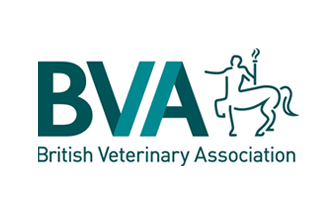How and where can I contribute to animal disease surveillance?

How do I report notifiable diseases?
Notifiable diseases in animals must be reported to government authorities even if you only suspect that an animal might be affected. These relevant authorities to report to are:
- APHAin England, Wales and Scotland
- The nearest Divisional Veterinary Office in Northern Ireland
How can I collect surveillance data from farm animals?
Over 80% of vets we surveyed submit animal material to the UK surveillance network – do you?
England and Wales
Farm animal post-mortems and diagnostic testing are conducted by APHA Veterinary Investigation Centre or one of APHA's partner sites. Check your nearest APHA Veterinary Investigation Centre of partner site.
A free carcase collection service is available in some areas (see APHA's postcode search tool).
See more information about services available via the APHA Vet Gateway: ‘Surveillance and Diagnostics’ information and services page and get more detail on how to submit samples through APHA’s Guidance on sample and test selection.
Read the most recent APHA animal disease information reports.
Scotland
Farm animal post-mortems and diagnostic testing are conducted by SRUC Veterinary Services.
For more support on submitting samples, read SRUC Veterinary Diagnostics’ general sampling advice.
Northern Ireland
Farm animal disease diagnostic services are provided by the Agri-Food and Biosciences Institute (AFBI) laboratories in Stormont and Omagh.
Read the most recent AFBI animal disease surveillance reports (Northern Ireland).
How can I collect surveillance data from companion animals?
83% of vets we surveyed told us they thought national small animal health and disease monitoring is useful – do you?
Across the UK, companion animals, surveillance data can be collected from veterinary practice management systems for companion animals. The two initiatives in the UK which collect this data are:
Both initiatives have a range of interactive resources to help you derive value from contributing animal health and disease monitoring surveillance data. These include: SAVSNET in real time and VetCompass interactive resources.
What can I do about Alabama Rot?
We know there’s increasing public concern about Alabama Rot (Non azotaemic cutaneous and renal glomerular vasculopathy), Anderson Moores Veterinary Specialists, leaders in research into this condition, have produced an advice sheet for vets and a a veterinary information sheet.
For clients, vets can signpost to the Anderson Moores CRGV/Alabama Rot information sheet for clients.
Both vets and clients can also see a heat map of confirmed cases of Alabama Rot on the Vets4Pets #stopalabamarot map.
How can I collect surveillance data from equidae?
Across the UK, the Animal Health Trust collects epidemiological and disease surveillance information from equines through different named condition schemes.
In Scotland, Capitol Diagnostics also carry out post-mortems and diagnostic testing for equines.
Read the latest Defra/AHT/BEVA equine quarterly disease surveillance reports. You can also register to receive Defra/AHT/BEVA equine quarterly disease surveillance reports direct to your inbox.
How can I collect surveillance data from wildlife?
In Great Britain wildlife disease surveillance is provided by the APHA Diseases of Wildlife Scheme. Read the latest APHA Veterinary Record monthly wildlife disease surveillance report.
If you have found something new, unusual, severe, or unresponsive in relation to wildlife diseases, please contact the Wildlife Expert Group veterinary lead, Paul Duff (01768 885295), or your nearest Veterinary Investigation Centre.
For more information on the BVA position on veterinary scanning surveillance (animal health and disease monitoring) please contact [email protected]

